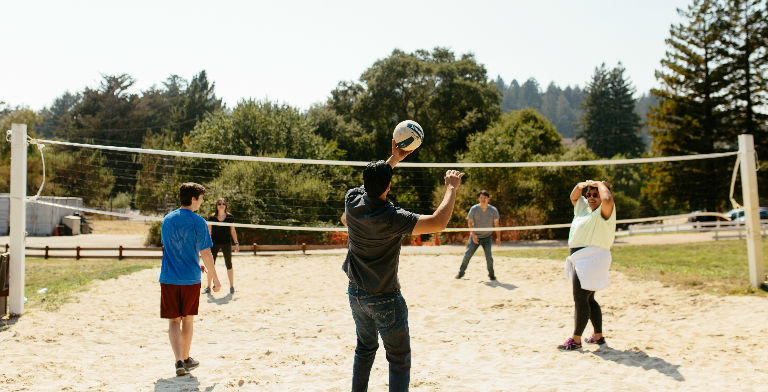About PTSD
Learn More About PTSD
Posttraumatic stress disorder, which is commonly referred to as PTSD, is a mental health disorder that is characterized by persistent distressing symptoms in the aftermath of witnessing, learning about, or experiencing a traumatic event. Occurrences that can lead to the onset of PTSD include, but are not limited to, attacks, assaults, bullying and other forms of harassment, natural disasters, automobile accidents, plane crashes, serious illnesses, and military combat. It is both normal and expected to experience fear, sadness, or even horror after enduring or witnessing a traumatic event; however, individuals who suffer from posttraumatic stress disorder suffer symptoms whose duration and severity degrade their quality of life and impair their ability to meet personal, academic, occupational, and/or social obligations.
PTSD can affect adolescents, teenagers, and adults, and symptoms can become evident either in the immediate aftermath of the event or after weeks or months have passed. Individuals who are afflicted with PTSD may re-experience the trauma via flashbacks or nightmares, or may avoid places, events, or situations that remind them of the trauma. Other symptoms include dramatic changes in mood, thought processes, and emotional reactions. Left untreated, these symptoms are likely to worsen over time and may lead to a range of additional mental, emotional, and behavioral problems, including substance abuse and chemical dependency.
Thankfully, comprehensive treatment programs such as The Camp have proved to be effective in helping adolescents, teenagers, and adults who are struggling with PTSD and substance use disorders. PTSD is a complex and potentially debilitating disorder, but clinically sophisticated PTSD treatment delivered in a compassionate manner has helped many sufferers learn to manage their symptoms and live happier and healthier lives.
Statistics
PTSD Statistics
According to the National Center for PTSD, about 60 percent of men and 50 percent of women will experience some form of trauma during their lives, and about 4 percent of men and 10 percent of women will develop symptoms that meet the criteria for posttraumatic stress disorder following that traumatic exposure. In an average year, more than 5.2 million Americans will suffer from PTSD.
The PTSD Foundation of America reports that one of every three U.S. service members who return from a combat deployment will experience PTSD symptoms, yet only 40 percent of troops who have these symptoms will seek professional help.
Experts estimate that about 5 percent of adolescents and teenagers will meet the criteria for PTSD before reaching age 18. About 8 percent of adolescent girls will develop posttraumatic stress disorder, as will about 2 percent of adolescent boys. Among both genders, the likelihood of developing PTSD increases with age.
Causes & Risks
Causes and Risk Factors for PTSD
By definition, posttraumatic stress disorder has an environmental cause, as this disorder results from experiencing, witnessing, or learning about an external event. However, certain genetic risk factors can increase the likelihood that a person who experiences trauma will develop PTSD.
Genetic: Several studies suggest that a predisposition for developing posttraumatic stress disorder has a hereditary or genetic component. People whose family members have struggled with PTSD or whose family history includes the presence of anxiety disorders appear to be at a higher risk for developing PTSD in the aftermath of a traumatic event than are individuals whose family members have not been afflicted by anxiety or PTSD. One genetic connection to PTSD may be found in the body’s physical response to trauma, as researchers are investigating whether people who produce elevated levels of the hormone norepinephrine during trauma are more likely to suffer from the distressing memories that are symptomatic of PTSD.
Environmental: In addition to the traumatic event that triggers the onset of PTSD, a number of other environmental factors may influence whether or not a person will develop this disorder. For example, people who have been exposed to high levels of stress, were raised in dysfunctional and/or chaotic households, or have previously experienced trauma may have an increased risk of developing PTSD. Also, individuals who have insufficient coping skills, or who lack either a formal or informal support system, may have a heightened likelihood of being afflicted with PTSD in the aftermath of a traumatic event.
Risk Factors:
- Lack of healthy coping skills
- Lack of an effective support network
- Gender (PTSD is more common among women than among men)
- Family history of PTSD and/or anxiety disorders
- Presence of a preexisting mental health condition
- Personal history of drug abuse and chemical dependency
- Poverty
- Being divorced or widowed
- Serving in the military
Signs & Symptoms
Signs and Symptoms of PTSD
Symptoms of posttraumatic stress disorder are divided into three categories: re-experiencing, avoidance, and hyperarousal. While no single symptom or set of symptoms will occur in every case of PTSD, the following are among the more common signs that a person is dealing with this disorder:
Re-experiencing symptoms:
- Flashbacks, or dissociative reactions that make the sufferer feel as though he or she is once again in the midst of the traumatic experience
- Intense, disturbing nightmares that are related to the traumatic event
- Physiological responses, such as difficulty breathing, excessive perspiration, and elevated heart rate in response to thinking about or being reminded of the traumatic experience
- Involuntary, intrusive, and distressing memories of the traumatic event
Avoidance symptoms:
- Staying away from people, places, situations, or conversations that remind the sufferer of the traumatic event
- Attempts to avoid thoughts, memories, or feelings that are associate with the traumatic event
- Inability to remember details about the trauma
- Feelings of hopelessness about the future
- Feelings of detachment or estrangement
- Inability to experience positive emotions, such as joy, love, and pleasure
Hyperarousal symptoms:
- Irritable behavior, including outbursts of anger
- Insomnia and/or related sleep disturbances
- Engaging in reckless, risky, or otherwise self-destructive behaviors
- Impaired ability to concentrate
- Hypervigilance
- Exaggerated startle response
Effects
Effects of PTSD
When left untreated, PTSD has the potential to have a profoundly negative impact on virtually all areas of a person’s life. Examples of the many ways that symptoms of posttraumatic stress disorder can impede or impair a person’s pursuit of a productive future include, but are not limited to, the following:
- Substandard job performance, possibly leading to unemployment
- Decline in academic performance, possibly resulting in failure and/or expulsion
- Homelessness
- Strained or ruined interpersonal relationships
- Destruction of the family via separation, divorce, and loss of child custody
- Social withdrawal and/or self-isolation
- Engagement in self-harming behaviors
- Physical harm resulting from reckless behaviors
- Legal problems related reckless behaviors
- Substance abuse and addiction
- Development of co-occurring mental health disorders
- Overwhelming guilt and/or shame
- Low self-esteem and diminished self-image
- Suicidal thoughts and actions
Co-Occurring Disorders
PTSD & Co-Occurring Disorders
Many people who develop posttraumatic stress disorder are also dealing with another mental health condition. Unfortunately, it is not uncommon for individuals who are suffering from PTSD to begin abusing drugs and/or alcohol in an attempt to self-medicate the distressing symptoms that they experience as a result of this disorder. In such cases, receiving specialized treatment that is tailored to address the symptoms of both PTSD and the co-occurring substance use disorder is warranted in order to find true healing. In addition to substance use disorders, the following are among the disorders and conditions that most commonly co-occur alongside posttraumatic stress disorder:
- Bipolar disorder
- Major depressive disorder
- Persistent depressive disorder
- Generalized anxiety disorder
- Social anxiety disorder
- Separation anxiety disorder
- Specific phobia
- Panic disorder
- Obsessive-compulsive disorder (OCD)
















